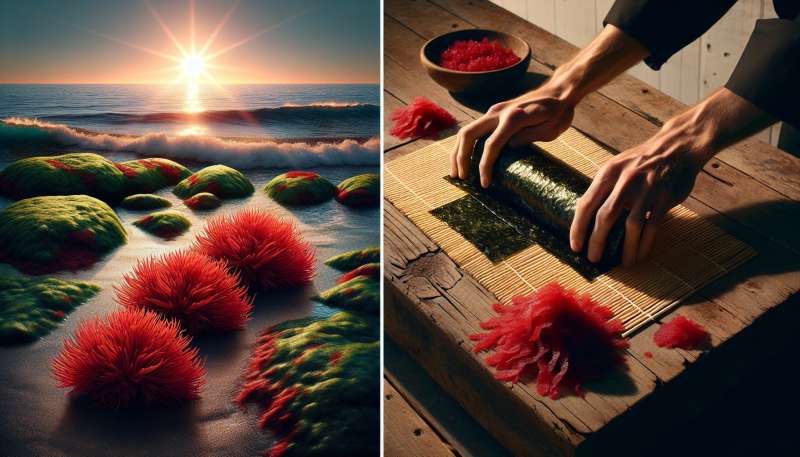
Introduction to Red Algae
Red algae, or Rhodophyta, are primarily marine organisms known for their rich pigmentation. This group is pivotal in marine ecosystems, contributing significantly to coastal biodiversity.
Distinctive Pigmentation
The vibrant red color of Rhodophyta arises from phycoerythrin, a pigment that absorbs blue light and reflects red. This allows red algae to photosynthesize in deeper waters where light is scarce.
Calcium Carbonate Secretion
Certain red algae species secrete calcium carbonate, playing a crucial role in reef-building. These calcified forms help establish and maintain the structure of coral reefs.
Ancient and Diverse Lineage
Red algae are among the oldest groups of eukaryotic algae, with fossil evidence dating back 1.2 billion years. Over 7,000 species exhibit a wide range of morphologies and sizes.
Symbiotic Relationships
Red algae engage in symbiosis with various marine organisms. For instance, they provide essential nutrients to coral reefs and offer habitat for small aquatic creatures.
Edible and Nutritious
Several red algae species are edible and nutritious, rich in vitamins and minerals. Nori, used in sushi, and Irish moss, a thickening agent, are well-known examples of edible red algae.
Threats and Conservation
Despite their resilience, red algae face threats from ocean acidification and climate change. Conservation efforts are focused on protecting these vital organisms and their habitats.Red Algae in Space
Red algae have been studied in space to understand their resilience and potential for supporting long-term human space exploration.
What pigment defines Rhodophyta's color?
Chlorophyll absorbs red light
Phycoerythrin reflects red light
Phycocyanin emits green hue
Company